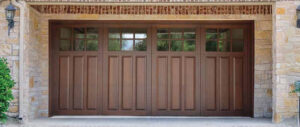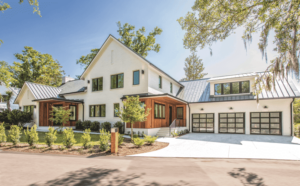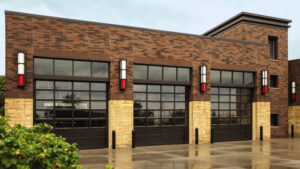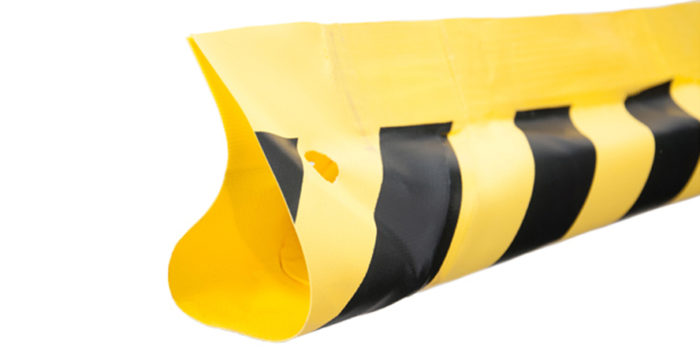Garage doors play a significant role in protecting your home and belongings, keeping your property safe from weather elements, pests, and potential intruders. While most homeowners focus on the garage door itself, one critical part often overlooked is the garage door bottom seal. Understanding the various garage door bottom seal types available can make a huge difference in maintaining the comfort, cleanliness, and safety of your home.
Let’s dive deeper into the different types of garage door bottom seals and how each one can benefit your garage!Before we explore the different types, it’s essential to understand why a bottom seal is vital. A quality garage door bottom seal helps:
- Keep water, dust, and debris out of your garage
- Prevent pests and insects from entering
- Reduce energy bills by preventing drafts
- Improve insulation, making your garage more comfortable
- Protect items stored in your garage from weather-related damage
Main Garage Door Bottom Seal Types
There are several main types of garage door bottom seals, each designed to address specific issues. Let’s explore each of them in detail.
1. T-Type Garage Door Bottom Seal
The T-type garage door seal is a popular and versatile option, suitable for many garage door types. It is called a T-type because it has a shape that fits into tracks at the bottom of the garage door. This seal is typically made from flexible rubber or vinyl, providing a secure, tight barrier against weather and pests. T-type seals are:
Easy to install and replace
Available in multiple sizes and lengths
Effective in keeping out rain, snow, pests, and debris
2. Bulb-Type Garage Door Bottom Seal
Bulb seals feature a bulb-shaped design, usually crafted from durable rubber. This design allows the seal to compress tightly when the door closes, creating an excellent barrier even on uneven or slightly damaged floors. Bulb seals:
Adapt well to gaps and uneven surfaces
Provide excellent weather resistance
Are highly durable, resisting cracking and hardening
3. Beaded Garage Door Bottom Seal
Beaded seals are designed with unique beads or ridges along the sides, fitting snugly into the track at the bottom of the garage door. These seals are popular because of their secure fit and easy replacement process. They resist slipping and shifting, making them an excellent choice for high-traffic garages. Beaded seals:
Provide a secure, tight fit
Resist movement and displacement
Protect against water infiltration and pest intrusion
4. Brush-Type Garage Door Bottom Seal
Brush seals utilize heavy-duty bristles instead of solid rubber or vinyl. This type of seal is excellent at blocking dust, dirt, and pests but is less effective at keeping out moisture or creating airtight seals. Brush seals work best in garages that face dust, leaves, and debris problems rather than significant moisture concerns. Brush seals:
Excel at keeping debris and pests out
Offer flexibility for uneven garage floors
Are ideal for dry climates and dusty areas
5. Threshold Garage Door Bottom Seal
Unlike other types, threshold seals attach directly to the garage floor rather than the door. Made from sturdy rubber or vinyl, these seals create a strong barrier that the door rests against when closed. Threshold seals are particularly effective in preventing water and flooding, making them a great choice for garages in wet climates. Threshold seals:
Provide superior water and moisture protection
Are excellent for uneven floors or gaps
Protect against extreme weather conditions, including snow and rain
6. J-Type Garage Door Bottom Seal
J-type seals are named for their shape, resembling the letter “J” from the side. These seals fit securely into tracks or channels on the garage door bottom, offering strong protection against weather and pests. They are particularly suitable for metal doors and are:
Easy to install
Great for providing insulation and reducing drafts
Durable, flexible, and weather-resistant
Choosing the Right Garage Door Bottom Seal
Selecting the right type of seal for your garage door involves considering several important factors:
- Climate Conditions:
- Wet and cold climates need seals providing robust moisture resistance, like bulb or threshold seals.
- Dry climates may benefit from brush seals to handle dust and debris effectively.
- Garage Floor Condition:
- Uneven or damaged floors benefit from flexible seals like bulb or threshold types.
- Smooth, level floors pair well with T-type or beaded seals.
- Pest Control Needs:
- Homes prone to pest issues should use tight-fitting seals like bulb or threshold seals.
- Frequency of Use:
- High-traffic garages should opt for durable options like beaded or bulb seals.
Maintaining Your Garage Door Bottom Seal
Regular maintenance helps your seal last longer and stay effective:
- Inspect seals regularly for cracks, tears, or brittleness.
- Clean your seals periodically to remove debris and dirt.
- Replace your seals at the first sign of significant damage to maintain effective protection.
Benefits of Installing a Proper Garage Door Bottom Seal
Upgrading or replacing your garage door seal has numerous benefits:
- Enhanced Energy Efficiency: Seals reduce drafts, helping you save on heating and cooling costs.
- Increased Garage Comfort: Prevent moisture and temperature fluctuations, keeping your garage comfortable.
- Protection Against Pests: Effective sealing prevents unwanted rodents and insects.
Improved Garage Door Performance: Seals reduce wear and tear on your garage door by providing smoother operation.
How to Install a Garage Door Bottom Seal
Installing most garage door bottom seals is a straightforward DIY task:
- Remove the old seal by sliding or peeling it out.
- Clean the tracks or surface thoroughly.
- Measure and cut your new seal to fit your door.
- Slide or push the new seal into place.
- Check the seal to ensure it fits snugly against the floor and adjust as needed.
However, for more complex installations, like threshold seals or specialized tracks, consider seeking professional assistance.
What is the difference between a threshold seal and a garage door seal?
A threshold seal attaches to the garage floor and creates a raised barrier. It’s designed to keep water, debris, and pests out by sealing gaps between the garage door and floor. A regular garage door seal is attached directly to the bottom of the door itself and moves with the door, sealing directly against the floor to prevent entry of water, pests, and drafts.
How do I know which door seal I need?
To figure out the right door seal for your garage, consider:
Floor condition: If your floor is uneven, choose a bulb or threshold seal.
Climate: For wet conditions, threshold seals or robust rubber seals work best.
Pest prevention: For effective pest control, tight-fitting bulb or threshold seals are ideal.
What do you call the seal at the bottom of a garage door?
The seal at the bottom of a garage door is commonly referred to as a garage door bottom seal or sometimes a weatherstrip. Its purpose is to create a barrier against weather elements, pests, and dirt.
Can you replace the rubber seal at the bottom of a garage door?
Yes, you can replace the rubber seal at the bottom of your garage door. It’s a straightforward process that involves removing the old seal, cleaning the area, measuring and cutting a new seal, and fitting it into place. If you’re unsure or uncomfortable doing it yourself, professional help is available.
Need Professional Help with Your Garage Door Bottom Seal?
Choosing the right garage door bottom seal is essential to your home’s comfort, efficiency, and safety. Whether you’re interested in installing a durable bulb seal, an effective threshold seal, or a flexible T-type seal, professional guidance ensures you get the best results.
Our expert team at OHD Bellingham is ready to help you choose and install the perfect garage door bottom seal tailored to your specific needs. We offer friendly advice, skilled installation, and top-quality products to ensure your garage remains secure, comfortable, and energy-efficient.
Ready to upgrade your garage door bottom seal today? Call Now at (360) 734-5960 to speak with our experts and discover the ideal seal solution for your home!
Ready to Begin?





